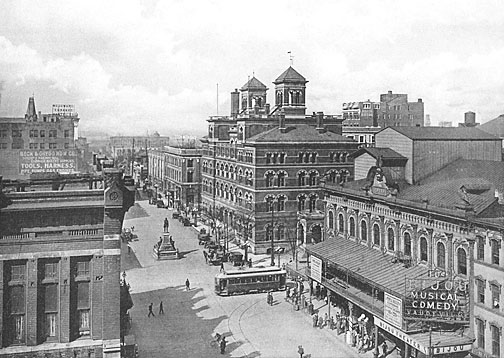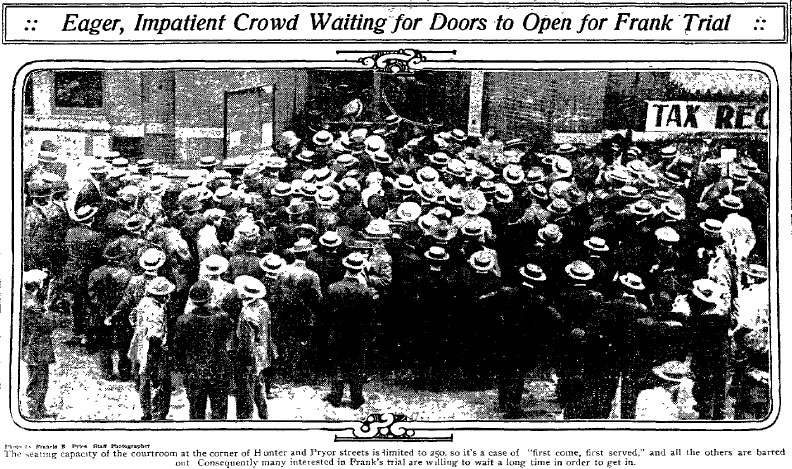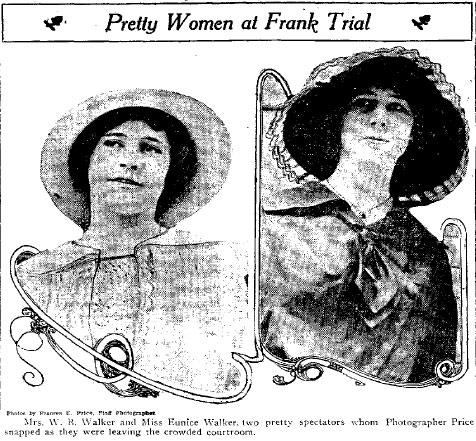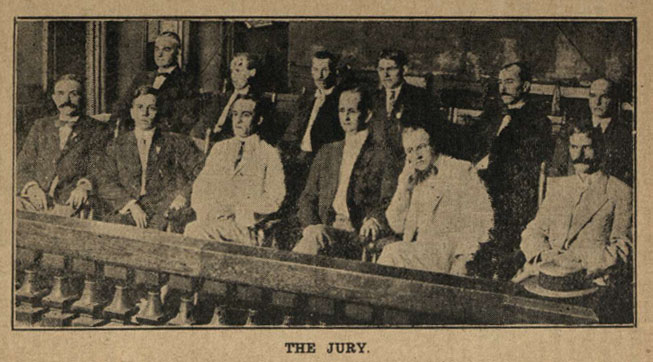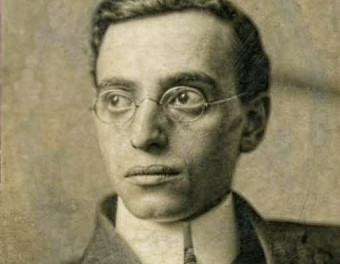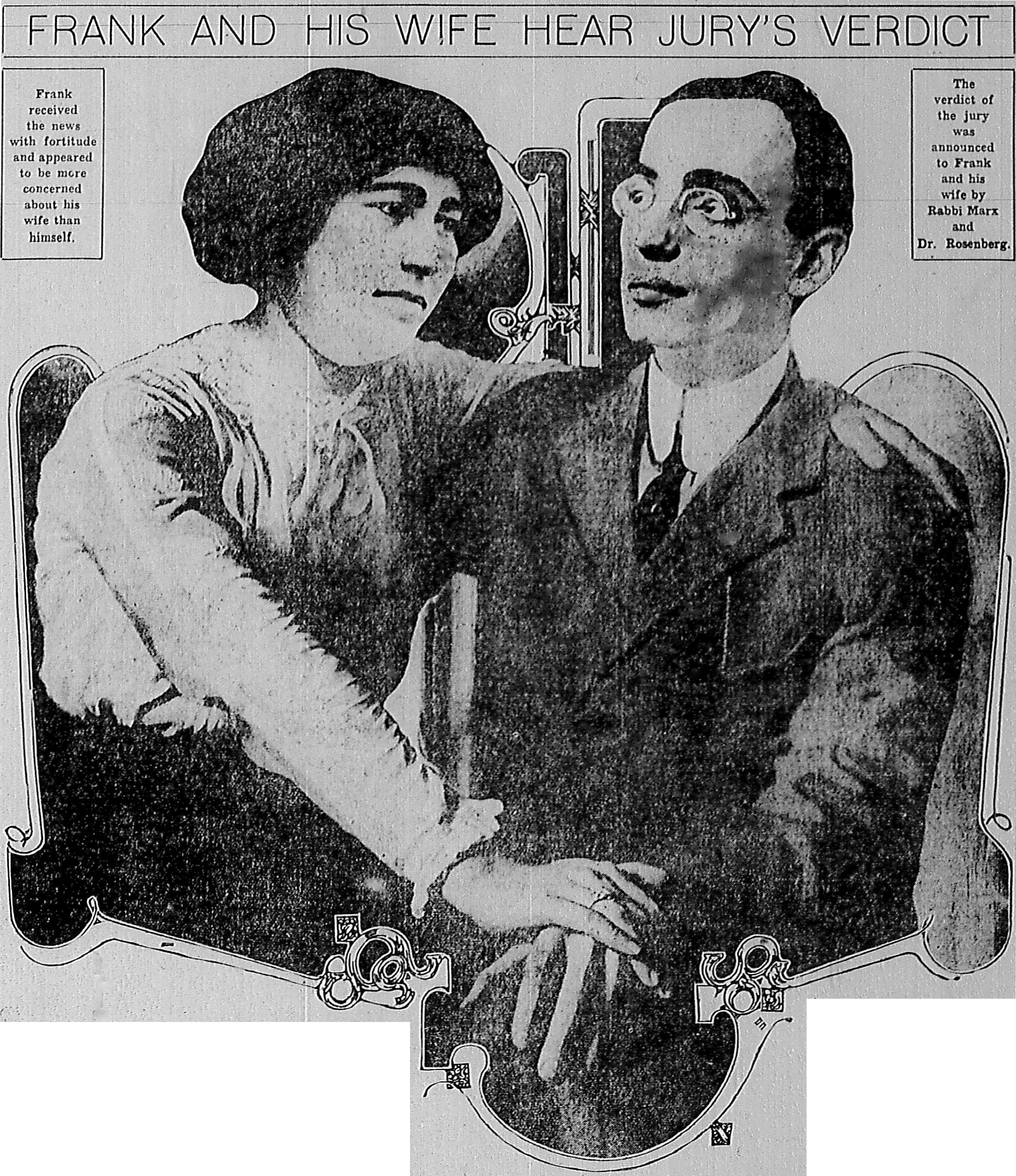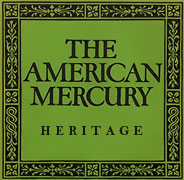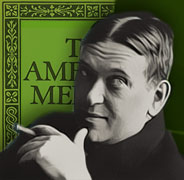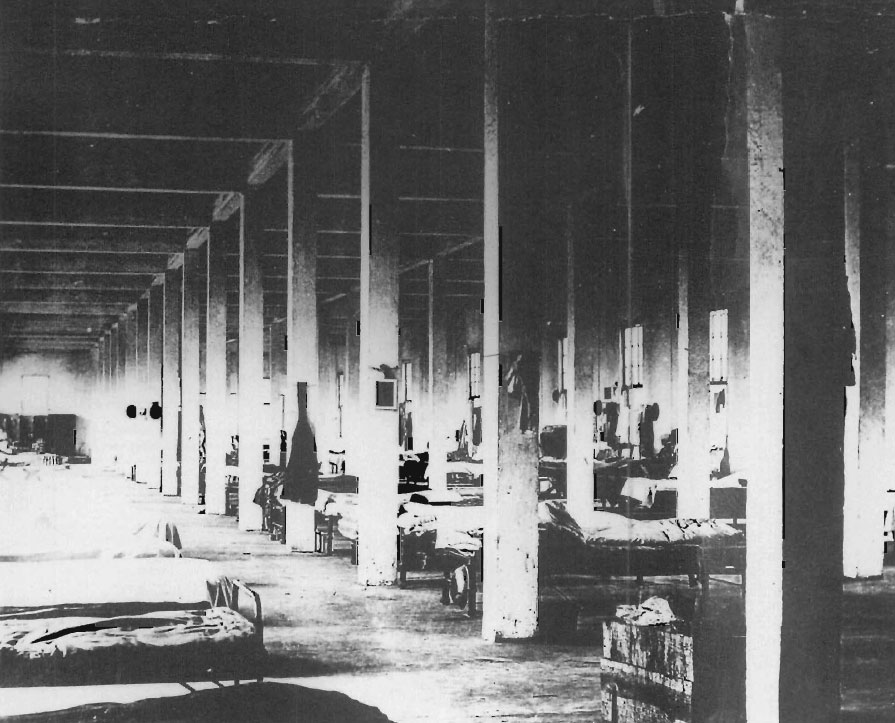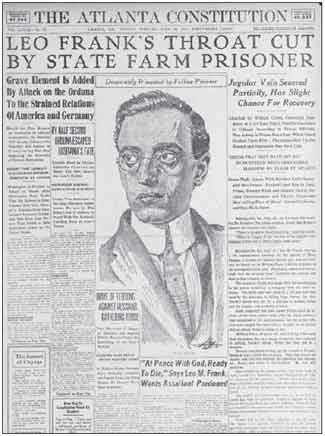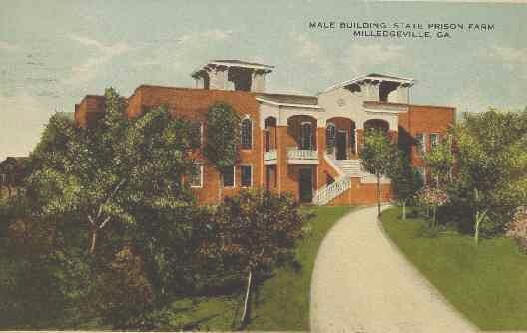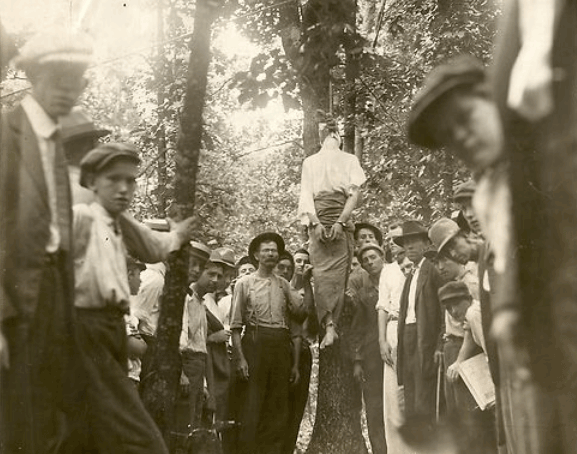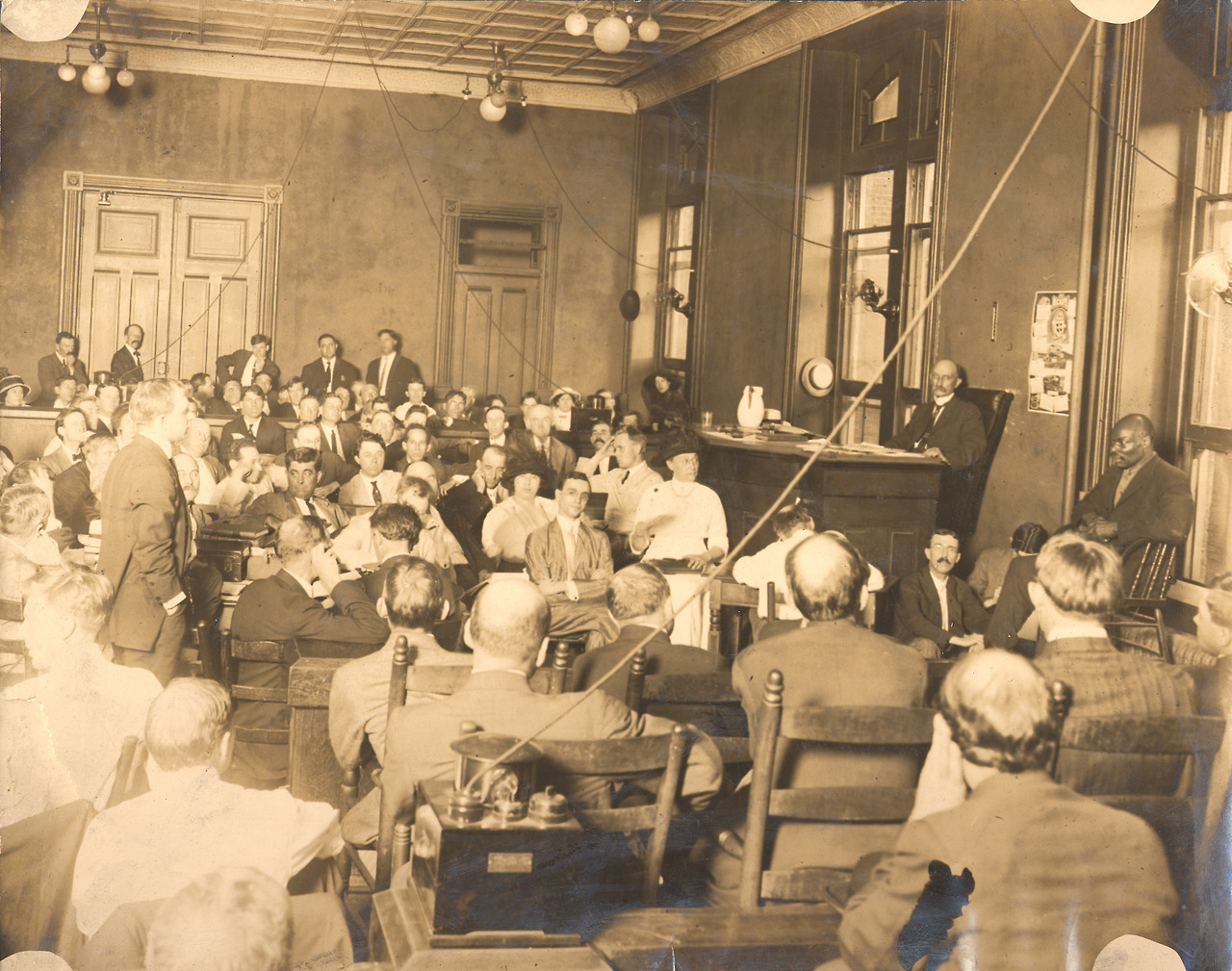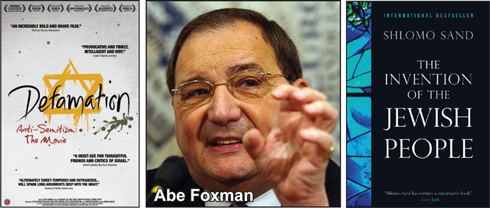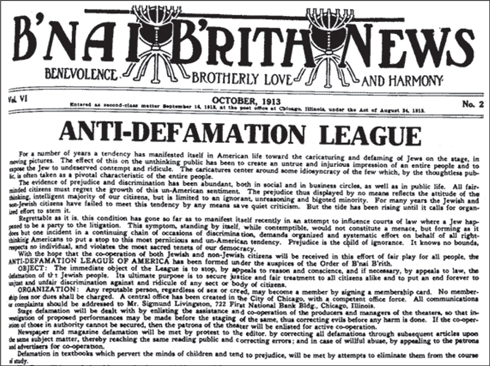Atlanta News, Weather, Traffic, and Sports | FOX 5
Tom Watson Statue To Be Removed From Georgia State Capitol
Posted on October 23, 2013 by Hunter Wallace
ADL exults over the removal of the Tom Watson statue at the Georgia State Capitol
ADL exults over the removal of the Tom Watson statue
Georgia
Gov. Nathan Deal of Georgia recently signed an executive order authorizing the removal of the Tom Watson statue from the grounds of the Georgia State Capitol in Atlanta.
Rather than be seen as a weakling who is capitulating to the demands of a PC lynch mob, Gov. Deal claims that it is only a “safety issue” and that the statue is being removed due to a “big renovations” project on the steps of the State Capitol, but a spokesman for the Georgia Building Authority says that it would be a “prohibitive cost” to restore the statue to its present location and that it is being permanently removed to a nearby park.
In reality, the removal of the Tom Watson statue from the Georgia State Capitol is part of a well organized leftwing agitation campaign to remove the monument which includes a petition on Change.org that has gathered nearly 1,000 signatures. The ADL has issued a press release praising Gov. Nathan Deal for acting to remove the Tom Watson statue which has “offended” them for so many years:
“For many years we at the ADL and many Georgians of good will have been offended by the statute of Tom Watson standing in a place of honor at the front entrance of the capitol,” said Shelley Rose, Associate Director of the ADL Southeast Region. “We are grateful to Governor Deal for acting to move the statue. In doing so he sends a clear message that he will not tolerate the hatred and bigotry that defined so much of Watson’s career.”
Gov. Nathan Deal has succeeded in sending a “clear message” to State Rep. Tyrone Brooks, the president of the Georgia Association of Elected Black Officials, who is “elated” by the removal of the Tom Watson statue, and who would like to see the statues of Sen. Richard Russell, Gov. Eugene Talmadge, and Confederate General John B. Gordon also removed from the State Capitol, as well as all the other statues which he considers offensive.
Rep. Brooks has linked the removal of the Tom Watson statue to the NAACP’s victory in the removal of the 1956 Georgia State Flag. He believes that it is “a sign of progress” and that Gov. Deal has decided that it is time to “begin to remove the old racist artifacts” from the grounds of the Georgia State Capitol.
He also hopes that these “old racist artifacts” will be replaced by African-American, Native American, and Asian American monuments which represent “the Georgia of today” rather than “yesterday.”
Note: I’m seriously considering going to Atlanta to protest this.
http://www.occidentaldissent.com/2013/10/23/tom-watson-statue-to-be-removed-from-georgia-capital/
ADL Praises Georgia Governor Nathan Deal for Moving Statue of Tom Watson from Steps of State Capitol
October 22, 2013
Share via email
The Anti-Defamation League today praised Georgia Governor Nathan Deal for ordering the removal the statue of the notorious racist and anti-Semitic political leader Thomas E. Watson from the front steps of the state capitol.
“For many years we at the ADL and many Georgians of good will have been offended by the statute of Tom Watson standing in a place of honor at the front entrance of the capitol,” said Shelley Rose, Associate Director of the ADL Southeast Region. “We are grateful to Governor Deal for acting to move the statue. In doing so he sends a clear message that he will not tolerate the hatred and bigotry that defined so much of Watson’s career.”
“During his long public career as a political leader, Watson used hatred and bigotry to mobilize his voters. Watson was elected to the Georgia General Assembly in 1882, and went on to serve in the U.S. House and U.S. Senate. He demonstrated his onerous anti-Semitic views during the trial of Atlanta businessman Leo Frank, who was accused of the murder of a 13-year-old worker at the pencil factory where Frank served as manager. Watson’s poisonous editorials in his magazine The Jeffersonian were so offensive that the New York Times, in a story addressing the poisonous atmosphere surrounding the trial called Watson’s writing “of such character as to preclude their reproduction in any respectable newspaper.”
Rose was interviewed by Fox 5 Atlanta on Monday. Click here to view the video interview and corresponding article.
AJC.com By Our Readers Thursday, Oct. 10, 2013 Letters to Atlanta Journal Constitution
LEO FRANK
Column lacked context
behind man’s lynching
In “Murder case lives on in ballad” (Metro, Oct. 1), you responded to a reader’s request to print the lyrics to an old song about the murder of Mary Phagan.
Those lyrics, as you published them, point a condemning finger of blame at Leo Frank. While it is true that Frank was convicted of the murder, your column did not put the matter in the context it deserves. Many factors raise serious doubts about Frank’s guilt: The trial took place in a poisonous atmosphere of anti-Semitic bigotry tainting the community against Frank; the eyewitness whose testimony was key to the conviction recanted his version of the story years later, and the then-governor of Georgia found the trial to be so biased, he overturned the death sentence Frank received.
By not pointing out any of this, your column would lead readers to conclude that there is no doubt Frank was guilty.
BILL NIGUT, SOUTHEAST REGIONAL DIRECTOR, ANTI-DEFAMATION LEAGUE
http://www.ajc.com/news/news/opinion/readers-write/nbJRM/
Atlanta Forward Thomas E. Watson’s legacy
6:55 pm October 30, 2013, by David Ibata
Moderated by David Ibata
As might be expected in a state with as freighted a history as ours, a plan to move the statue of Thomas E. Watson — lawmaker, populist, poor folks’ champion, white supremacist and religious demagogue — from the steps of the state Capitol has prompted wide-ranging reactions. An Anti-Defamation League official is glad to see the statue go. The CEO of the Atlanta History Center says we should not sanitize history, but learn from it.
Statue move distances Georgia from Watson controversy
By Shelley Rose
It’s about time.
The imposing — some would say forbidding — statue of Thomas E. Watson has stood at the front entrance of the Georgia State Capitol since its unveiling in December 1932 and has withstood numerous efforts to remove it over the decades. Now, at long last, Gov. Nathan Deal has ordered its relocation to a less visible park across the street from the Capitol grounds. The Anti-Defamation League applauds this move.
Watson was a powerful Georgia political leader and journalist who began his career as a populist, arguing for better living and working conditions for rural Georgians, black and white. But as the beginning of the 20th century neared, he evolved into a demagogic bully, rallying Georgians around his fiery denunciations of blacks, Jews and Catholics.
Watson railed against them repeatedly in the pages of his magazine, The Jeffersonian. He helped revitalize the Ku Klux Klan and is credited with organizing its first cross-burning. He wrote about the “superiority of the Aryan” and stood “squarely for white supremacy.”
His anti-Semitic attacks on Atlanta Jewish businessman Leo Frank — accused of the 1913 murder of 13-year-old Mary Phagan — were so poisonous that many believe he inspired the hatred that led to Frank’s lynching. An article published in The New York Times the day after Frank was killed reported that Watson’s writings about Frank “preclude their reproduction in any respectable newspaper.”
It’s no wonder, then, that the Watson statue has sparked so many cries for its removal from the Capitol.
Some critics of the move acknowledge Watson’s controversial past but argue that it is problematic to try to erase our history — good or bad. They contend that the statue can serve today as a reminder that Georgia’s past does include a dark side represented by bigots like Watson. But the Capitol must represent fair and equal government for all. The statue’s current prominent display implicitly endorses Watson’s dark side, conveying an official message of exclusion and marginalization to many Georgians. Such a message is simply unacceptable in the 21st century.
We recognize that moving the statue from the Capitol grounds is a symbolic gesture and would not greatly change the practical status of race relations in Georgia today. However, symbols matter. Having the Watson statue occupy a place of particular honor, standing at the main entrance to the Capitol building where it cannot escape the notice of thousands of school children and others who visit the Capitol every day, sends the wrong message.
Surely we don’t want to hold him up as an example of a great leader in our state’s history. The statue needs to be moved to a place where Watson’s historical significance can be remembered, but his message of hate and bigotry can be distanced from our state government.
Ironically, it appears that the plaque on the Watson statue will survive its relocation. It reads, in part, “Honor’s the path he trod … a champion of right who never faltered in the cause.” Whatever he tried to accomplish for good early in his public life, by embracing bigotry and hatred, Watson chose an eventual path of dishonor.
Now is the time to show the people of Georgia that we are distancing ourselves from these beliefs. It has been over 90 years since Tom Watson’s death. It is time to remove his statue from our state Capitol grounds.
Shelley Rose is associate director of the Anti-Defamation League, Southeast Region.
We can learn from history
By Sheffield Hale
Putting anyone on a pedestal is a tricky business. Who we commemorate says just as much about the culture and point of view of the majority in political and economic power at the time as it does about the object of veneration itself. As a monument ages, it develops a history separate from its subject, particularly when popular opinions and perspectives change.
The impulse to remove monuments as time passes and perspectives change is natural. On one hand, a once-celebrated individual can come to be regarded negatively in the light of current culture, opinion and attitudes. It seems reasonable, therefore, for those who are personally offended by that person (and that belief system) to object to the community support that they believe is implicit in leaving the monument in place.
Others may wish to distance themselves from that past and prefer that the nuisance simply be removed, since it presents an embarrassing reminder of some aspect of our collective history. After all, it is much harder to wave a bloody shirt after it has been dry cleaned.
As natural and well-intentioned as these impulses are, I believe they do not serve our community well. Although these controversies may serve as a cautionary tale for the erection of new monuments, once erected, these physical embodiments of cultural and political views should be retained for the lessons they can teach us over time about ourselves and how we have grown and changed as a people, a community, and a country.
Preserving such monuments is not the same as implicit support of an ideology, but instead, with broader interpretation, should be viewed as a type of historical waypoint that helps us understand our current situation in relationship to our past.
Inscriptions on monuments beg for context. Today, modern technology, such as QR Codes, can direct the observer to a broader historical and cultural context of the monument. This modern technology and its interpretive authority can be updated, providing evolving perspectives over time.
The great story of this nation is not that we have always been enlightened by current standards, but that we have evolved in our treatment and acceptance of one another. An honest examination of our history requires us to confront a painful, ambiguous past – an examination that for many is difficult, challenging and distressing. That examination can also be provocative, stimulating and inspiring.
We cannot change our history. But, we can learn from it. Controversial history should not be sanitized. Instead, this is an opportunity to address the underlying issues that often divide us. Rather than censoring the past, let us bridge the divide and use the changing interpretation of history to open ourselves to perspectives that can allow all of us to learn from our past and create a better Atlanta. The past has much to teach us about who we are, and where we are — if we let it.
Sheffield Hale is president and CEO of the Atlanta History Center.
Tom Watson on the Leo Frank Case (Please download these PDFs from Watson’s Magazine and Post them to every online library in the world):
Jeffersonian weekly newspaper specifically about the Leo Frank Case from (1914 to 1917):
Individual Issues and Pages: http://www.leofrank.org/images/jeffersonian-newspaper-images/
Watson’s Magazine January, 1915:
Full Page Images (pages 139-163): http://www.leofrank.org/images/watsons-magazine-january-1915/
Watson’s Magazine March, 1915
Full Page Images (pages 235 – 278): http://www.leofrank.org/images/watsons-magazine-march-1915/
PDF: http://www.leofrank.info/library/watsons-magazine-1915/watsons-magazine-march-1915-pages-235-278.pdf
Watson’s Magazine August, 1915
Full Page Images (pages 182 – 235): http://www.leofrank.org/images/watsons-magazine-august-1915/
Watson’s Magazine September, 1915
Images: http://www.leofrank.org/images/watsons-magazine-september-1915/
Watson’s Magazine October, 1915
Images: http://www.leofrank.org/images/watsons-magazine-october-1915/
References:
ADL Praises Georgia Governor Nathan Deal for Moving Statue of Tom Watson from Steps of State Capitol. October 22, 2013.
http://atlanta.adl.org/news/adl-praises-georgia-governor-nathan-deal-for-moving-statue-of-tom-watson-from-steps-of-state-capitol/
Statue of controversial Ga. politician to be moved
http://www.myfoxatlanta.com/story/23747853/statue-of-controversial-ga-politician-to-be-moved
Politically Correct Spineless Coward Georgia Governor Nathan Deal Offers Tom Watson Statue Safety Ruse
http://www.ajc.com/weblogs/political-insider/2013/oct/22/state-lawmaker-says-hell-proceed-bill-preserve-his/
Your daily jolt: Statue of white supremacist to be removed from Capitol entrance
http://www.ajc.com/weblogs/political-insider/2013/oct/21/your-daily-jolt-statue-white-supremacist-be-remove/
Bid to Move Atlanta Statue Opens Window to Past
http://www.nytimes.com/2013/10/23/us/bid-to-move-ga-statue-opens-window-to-past.html
100 years later Atlanta Jews remove statue of Mary Phagan’s champion
http://www.democratic-republicans.us/english/english-100-years-later-atlanta-jews-remove-statue-of-mary-phagan-champion
Tom Watson’s Jeffersonian Publishing Company Background by Jewish Supremacist “Georgia Encyclopedia”
http://www.georgiaencyclopedia.org/articles/arts-culture/jeffersonian-publishing-company
Tom E. Watson’s Legacy
http://blogs.ajc.com/atlanta-forward/2013/10/30/thomas-e-watsons-legacy/
Facebook Stand with Tom Watson Rally
https://www.facebook.com/events/560360294035338/?notif_t=plan_user_joined
Occidental Dissent: Tom Watson Rally
http://www.occidentaldissent.com/2013/11/23/stand-with-tom-watson-rally-2/
Watson Statue Good Riddance by Shelley Rose of the ADL
http://www.ajc.com/news/news/opinion/good-riddance-to-watson-statue/nbchb/
Amren on the Erasing of White History
http://www.youtube.com/watch?v=HtO6CjNkzb0
+ + +
Little-known fact: Watson was offered large sums to be Leo Frank’s defense lawyer, but his conscience would not allow him to accept.
by David Sims
ON THE 100th anniversary of the founding of the Anti-Defamation League of B’nai B’rith, that infamous Jewish influence and espionage organization was successful in pressuring a Georgia governor into ordering the removal of the statue of former US Senator Thomas E. Watson (D-GA, 1921-22). Senator Watson offended the Jews by calling for the execution of Leo Frank, a Jewish man who raped and murdered 13-year-old Mary Ann Phagan at the factory he managed in 1913. More than a century later, the Jews are still trying to put a whitewash on the villainy of one of their own kind, and they are still suborning the corruption of public officials to achieve that purpose.
Thomas Watson had no particular antisemitism in him. Just before Leo Frank went on trial for Mary Phagan’s murder, Frank’s relatives approached Watson and requested that he be Frank’s defense attorney. Believing Leo Frank to be guilty, Watson declined the offer of generous compensation from that wealthy Jewish family.
Watson did, however, have a bitter political rival in the gentile Hoke Smith. During a contested election, Watson accused Smith of soliciting Jewish favor (and financing) by taking the side of Leo Frank, who had been convicted of Phagan’s murder. He accused Smith of selling out justice in order to win the election. Watson wrote: “Frank belongs to the Jewish aristocracy, and it was determined by the rich Jews that no aristocrat of their race should die for the death of a working-class Gentile.”
And that’s why the Jewish ADL wanted the statue of the former Senator from Georgia taken down in Atlanta.
Source: David Sims
http://nationalvanguard.org/2015/09/why-was-thomas-watsons-statue-removed/
Answering the question everyone is asking:
Why was the decades-old Tom Watson statue at the Atlanta Capitol entrance moved on the centennial (October 1913 – October 2013) of the Anti-Defamation League of B’nai B’rith founding year and month?
Because Leo Frank was elected the Atlanta B’nai B’rith president of the Gate City Lodge #144 in 1912 and his Summer of 1913 conviction for the rape and strangulation-murder of 13-year-old Mary Phagan had galvanized B’nai B’rith HQ to found the ADL less than two months after the fact.
Even though Leo Frank was convicted in late August 1913, in September 1913 his 500 member Independent Order of B’nai B’rith fraternal organization in Georgia voted UNANIMOUSLY (see Atlanta Constitution, September 24, 1913 at The Internet Archive) to re-elect him their president. So while Leo Frank was incarcerated in the city jail as his appeals were wending their way through the appellate courts (1913-1915), he was running the affairs of this powerful Atlanta Jewish group like a powerful mafia boss behind bars until the Autumn of 1914. He was not re-elected once the affidavits, testimony and evidence of the Leo Frank Georgia Supreme Court records were revealed to the public (Available at The Internet Archive).
I encourage everyone to please listen to the Tom Watson 2015 centennial audiobooks Vanessa Neubauer has created from Watson’s Jeffersonian Magazine, January, March, August, September and October of 1915.
I promise you won’t be disappointed.
1. Introduction
http://nationalvanguard.org/2015/03/audio-book-tom-watsons-the-leo-frank-case/
2. Tom Watson: The Leo Frank Case
http://nationalvanguard.org/2015/01/tom-watson-the-leo-frank-case/
3. Tom Watson: A Full Review of the Leo Frank Case
http://nationalvanguard.org/2015/03/audio-book-tom-watson-a-full-review-of-the-leo-frank-case/
4. Tom Watson: The Celebrated Case of The State of Georgia vs. Leo Frank
http://nationalvanguard.org/2015/06/audio-book-the-celebrated-case-of-the-state-of-georgia-vs-leo-frank/
5. Tom Watson: The Official Record in the Case of Leo Frank, a Jew Pervert
http://nationalvanguard.org/2015/07/audio-book-tom-watsons-the-official-record-in-the-case-of-leo-frank-a-jew-pervert/
6. Tom Watson: The Rich Jews Indict a State!
http://nationalvanguard.org/2015/07/audio-book-tom-watsons-the-rich-jews-indict-a-state/
Tom Watson articulated the evidence, testimony and exhibits of the Leo Frank trial with such force and power it is impossible to believe Leo Frank is innocent. Listen and find out why!

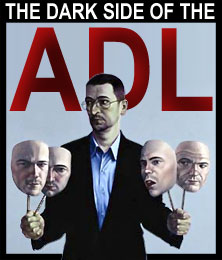
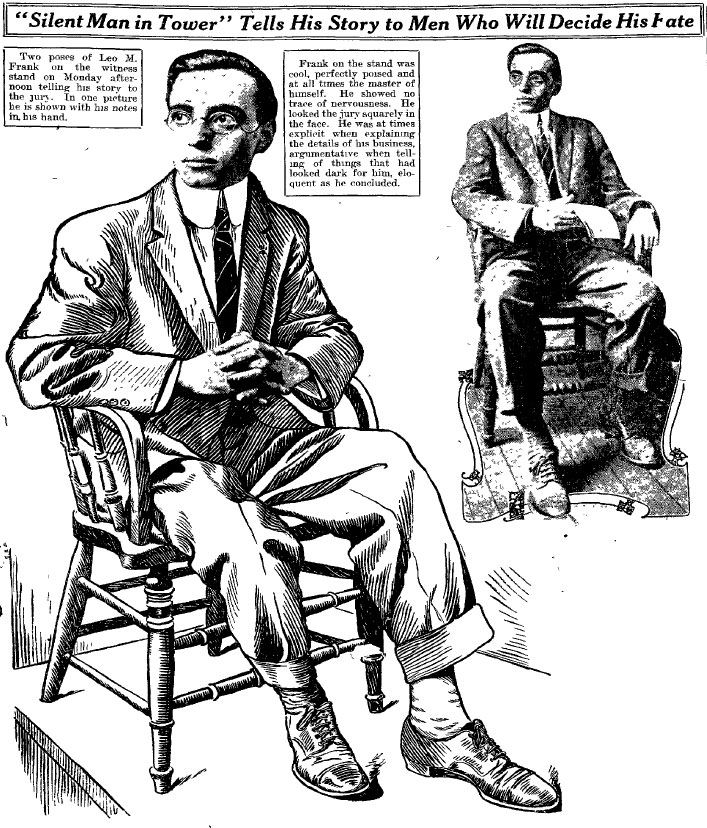
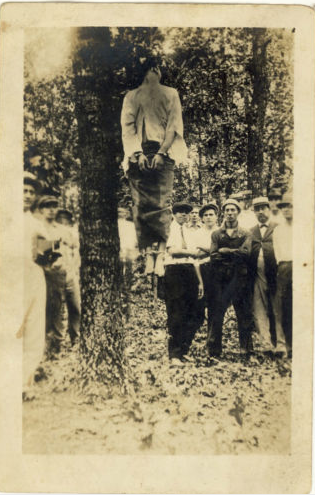
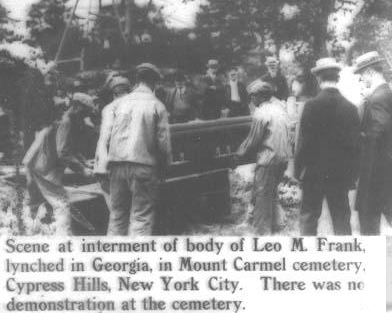
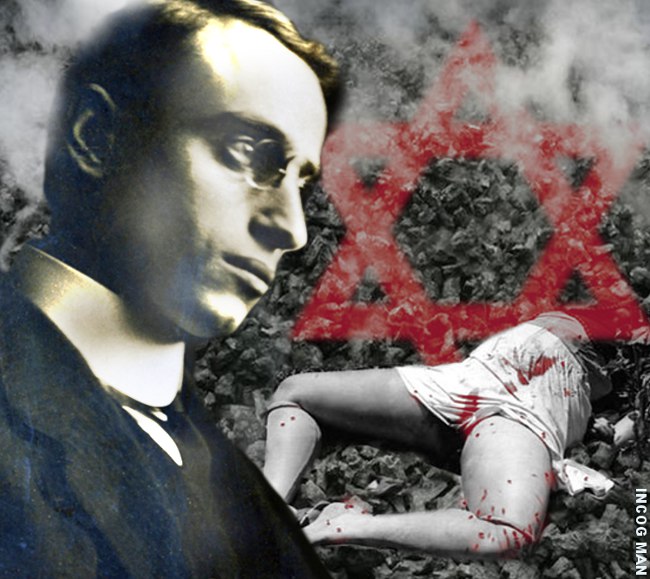
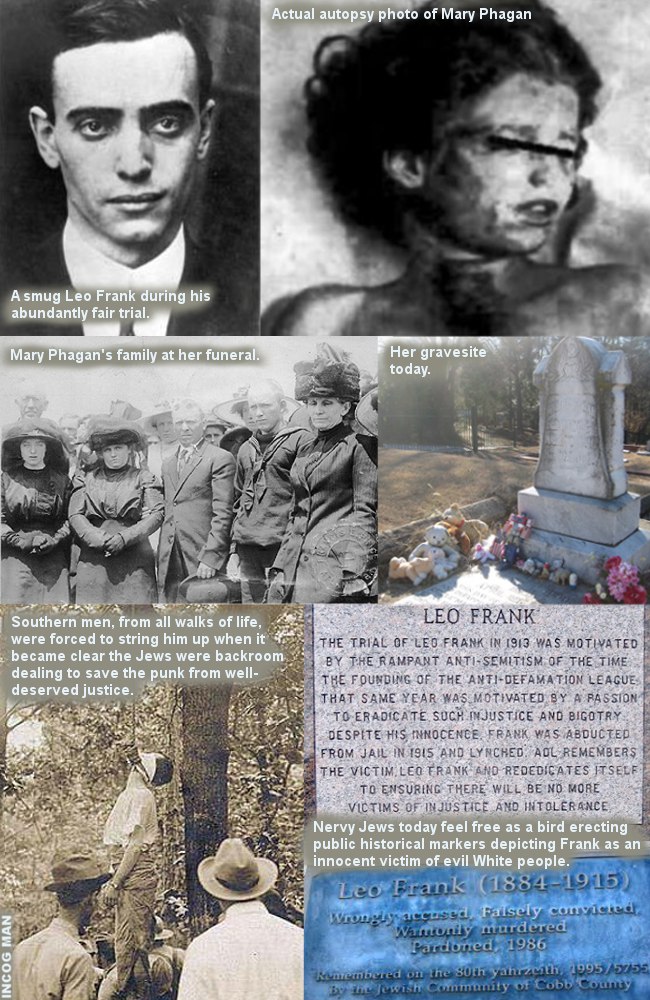
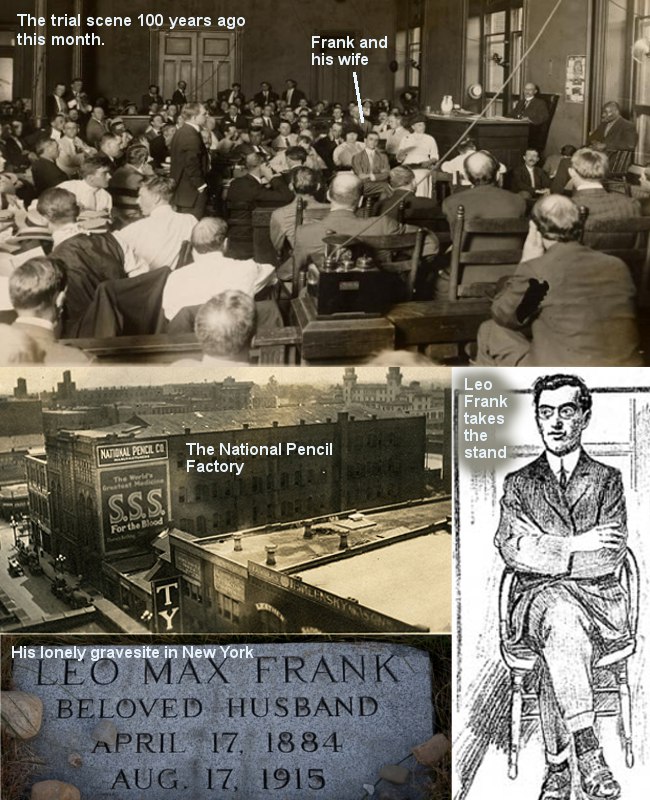





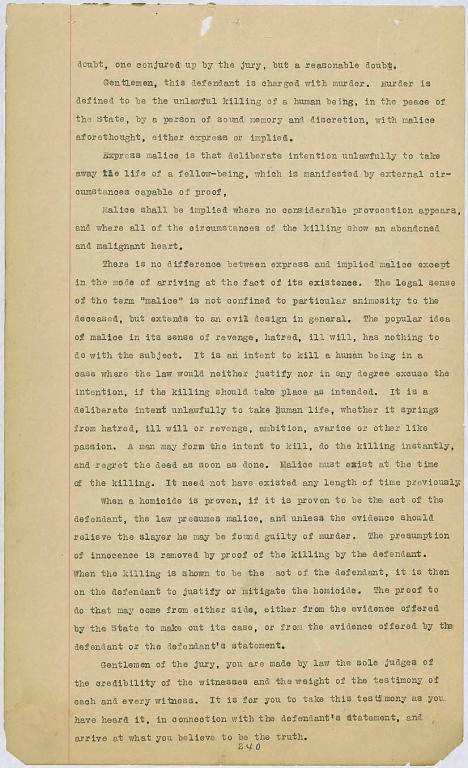
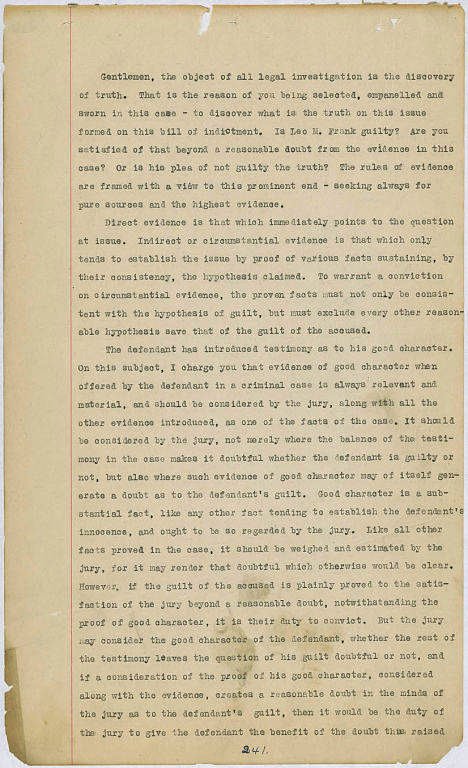
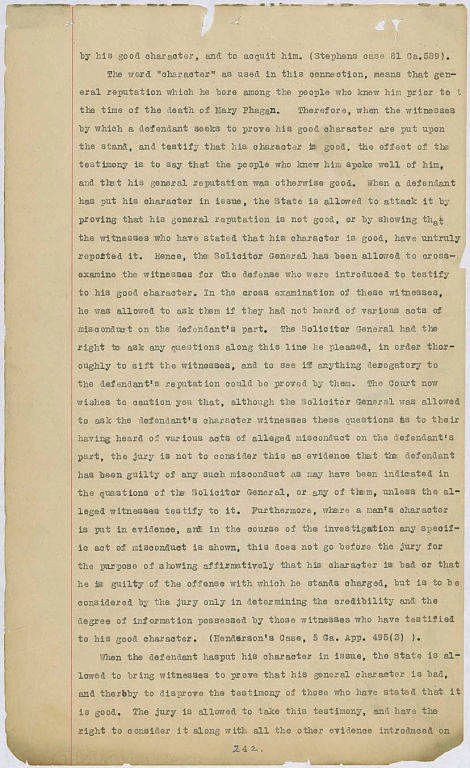
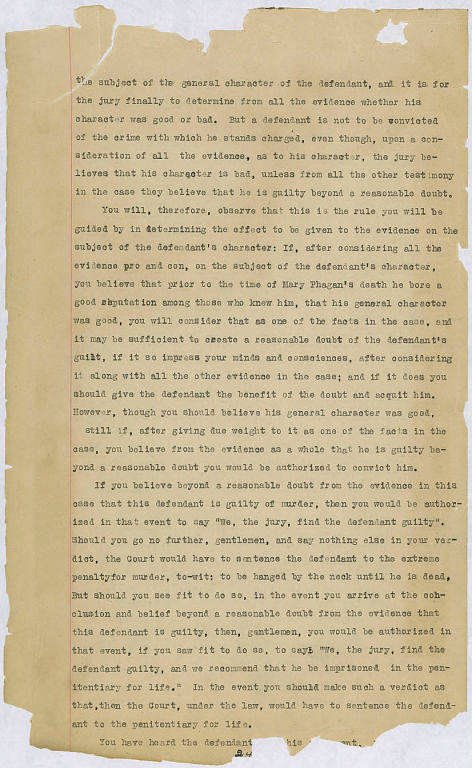
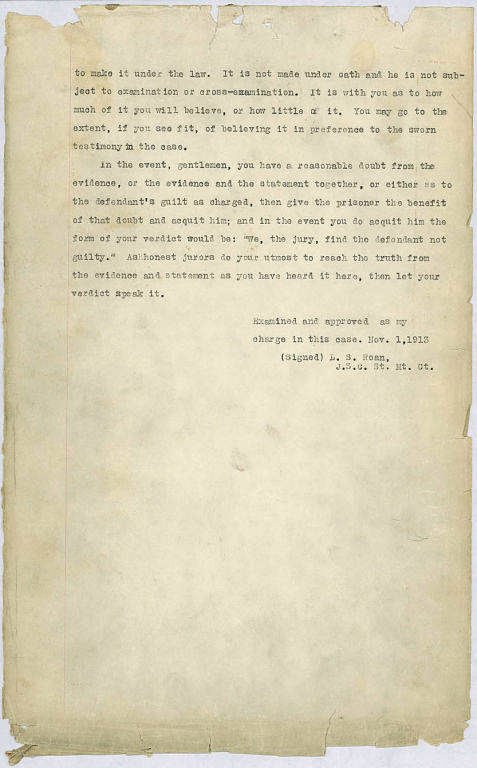
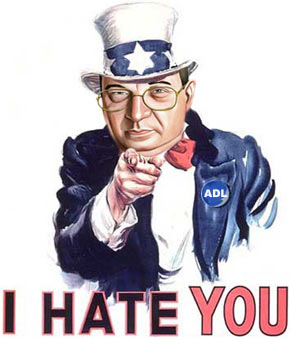

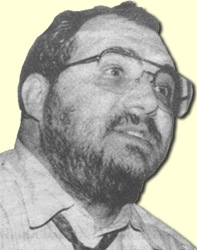
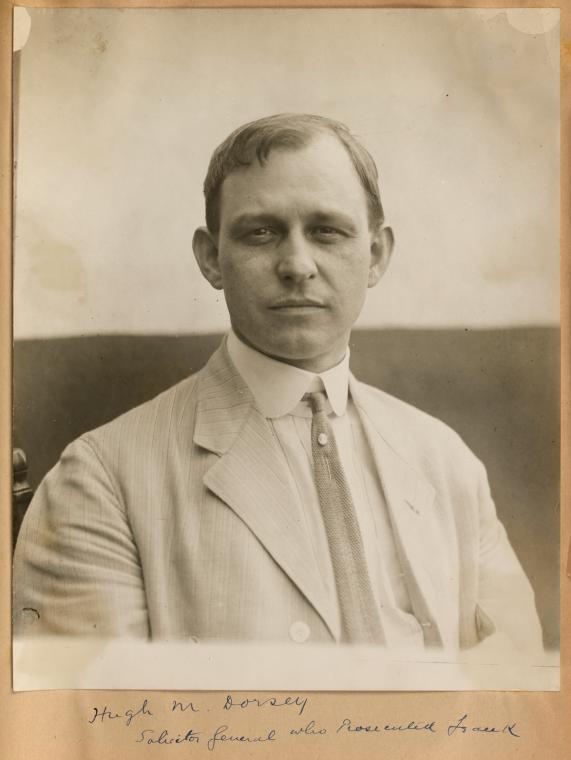




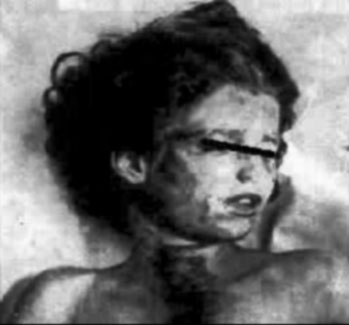 Experience first hand, out in the open, all the formerly censored details concerning the violent assault, sadistic pedophile rape, vicious strangulation and disfiguring mutilation of Mary Phagan by Leo Frank, that gave birth to the organized Anti-Semitism Lobby. The ADL has for a century smeared and defamed American patriots and critics of Israel’s Apartheid state as: prejudiced, bigoted, anti-Semites, haters, extremists, racists, bigots and Neo-Nazis. We will also be exposing the ADL’s anti-Gentile hate crime hoax and blood libel about Southerners allegedly chanting, “Hang the Jew” and “Kill the Jew” outside the courtroom where the windows were kept wide open as the trial was being conducted.
Experience first hand, out in the open, all the formerly censored details concerning the violent assault, sadistic pedophile rape, vicious strangulation and disfiguring mutilation of Mary Phagan by Leo Frank, that gave birth to the organized Anti-Semitism Lobby. The ADL has for a century smeared and defamed American patriots and critics of Israel’s Apartheid state as: prejudiced, bigoted, anti-Semites, haters, extremists, racists, bigots and Neo-Nazis. We will also be exposing the ADL’s anti-Gentile hate crime hoax and blood libel about Southerners allegedly chanting, “Hang the Jew” and “Kill the Jew” outside the courtroom where the windows were kept wide open as the trial was being conducted. 